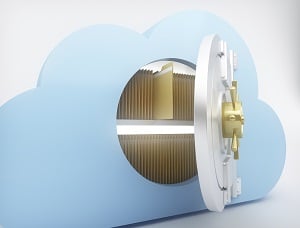In this day and age, most businesses are careful with their data...or at least, they think they are. Hard drives fail, software gets buggy, and ransomware attacks are rampant; having a reliable backup of all of your data and infrastructure is an elegant solution. But statistics show that, while 90% of companies do, indeed, backup their data regularly, only 41% do it daily, and only 20% of IT professionals are following best practices in their backup strategy.
What Is Data Backup?
A backup is an exact copy of files and systems that is stored elsewhere as part of a disaster recovery strategy. Backups can also restore your data and infrastructure to a certain point in time. If you’re familiar with videogames, it’s like saving your game, so if something goes catastrophically wrong during play, you can simply go back and start again.
Just like with videogame saves, the more often you backup your data, the less progress you’ll lose. And just like with videogames, if you get attacked out of seemingly nowhere, you’ll be really glad your last saved version wasn’t that long ago.

Why Is It Important To Back Up Your Data?
Backing up your data is an easy thing to put on the back burner and forget about. A backup policy will ensure that your vital data and systems are backed up consistently, and that responsibility for this task has been properly assigned. This policy should also include instructions for recovering your data in the event of a loss.
What Should Your Backup Policy Include?
Your backup policy should mandate that you regularly backup anything and everything you need for your business to function. Most industry professionals would recommend scheduling a full data backup once a week or more, with incremental backups including any updates more frequently.
Marco’s experts recommend that organizations follow the 3-2-1 backup rule, which I’ve outlined below:
- Three copies of your data should be maintained at all times.
- Two different types of storage should be used.
- One of those copies should be off-site.
Additionally, you may consider what’s called an air-gap backup, where not only is one of your backups off-site, it’s maintained in a separate, secured state from your production network. Finally, you should regularly test your backups and data restoration procedures to make sure they’re reliable when it counts.
On the surface, these measures may seem like overkill. However, modern ransomware attacks have grown more sophisticated, and they’re now routinely targeting your backups first to cut off any attempts at recovering your data without paying the ransom.
It’s pretty safe to say that no one has ever regretted having a thorough backup and recovery option, but many, many have bemoaned not going far enough to stop a ransomware attack. Having a second backup in a different location may be your saving grace, and there are many wonderful vendors these days that make off-site or cloud backups extraordinarily easy.
Off-Site vs. On-Site Backup
While some companies opt for a secondary data center, these days, off-site backup often refers to the cloud. Though some people worry about storing their data in the cloud, it’s generally safer than on-premise systems, and more cost-effective.

Marco’s experts frequently recommend Barracuda’s backup solutions to their clients, depending on their unique goals and security needs. With Barracuda, your data can easily be stored at an offsite-location or in the cloud. Restoration and testing are also remarkably easy—your data can be reproduced for you in minutes.
What's the Right Backup Solution for You?
Not every business is the same, and so the backup plan and solutions that are right for you may not be right for everyone else. If you’d like to talk to an expert, Marco’s cybersecurity specialists will get to know your organization, and help you determine which comprehensive backup solution might be a good fit.

